How Experts Say You Should Care For Anthurium ‘Laceleaf’ To Keep It Looking Good

HOUSEPLANTS > ANTHURIUM

Elizabeth is a Permaculture Garden Designer, Sustainability Consultant and Professional Writer, working as an advocate for positive change. She graduated from the University of St. Andrews with an MA in English and Philosophy and obtained a Diploma in Applied Permaculture Design from the Permaculture Association.
Reviewed By COLIN SKELLY

Colin is a Horticulturist and Horticultural Consultant with experience in a range of practical and managerial roles across heritage, commercial and public horticulture. He holds the Royal Horticultural Society’s Master of Horticulture award and has a particular interest in horticultural ecology and naturalistic planting for habitat and climate resilience.
ANTHURIUM GUIDES
Anthurium andraeanum is a popular houseplant with an exotic look – which is also known by the names ‘Flamingo Flower’ or ‘Laceleaf’.
Though Anthuriums come from tropical American rainforests, they can be grown as a houseplant here in the UK, but they do need to be cared for correctly if you wish to keep them alive and looking their best.
Overview
| Botanical Name | Anthurium andreanum |
| Common Name(s) | Laceleaf, flamingo flower |
| Plant Type | Perennial houseplant |
| Native Area | Tropical Central and Southern America |
| Hardiness Rating | H1A |
| Foliage | Evergreen |
| Flowers | Bright red spathes, yellow spadix |
| When To Plant | Anytime throughout the year |
Sunlight
Preferred
Bright, Indirect Light
Exposure
Sheltered
Size
Height
0.1 – 0.5M
Spread
0.1 – 0.5M
Bloom Time
All year
Soil
Preferred
Loam
Moisture
Moist but well-drained
pH
Any
Anthuriums is a genus with more than a thousand species and is the largest genus of the Arum plant family (Araceae).1Anthuriums. (n.d.). iNaturalist. Retrieved March 9, 2023, from https://www.inaturalist.org/taxa/49181-Anthurium
Its native range is in the tropical forests of the Americas, with Kew listing the plant as hailing primarily from the Central regions of Colombia and Ecuador.2Anthurium andraeanum. (n.d.). Kew Royal Botanic Garden. Retrieved March 9, 2023, from https://powo.science.kew.org/taxon/urn:lsid:ipni.org:names:84549-1
The species in this genus often grow as epiphytes, growing on other plants.
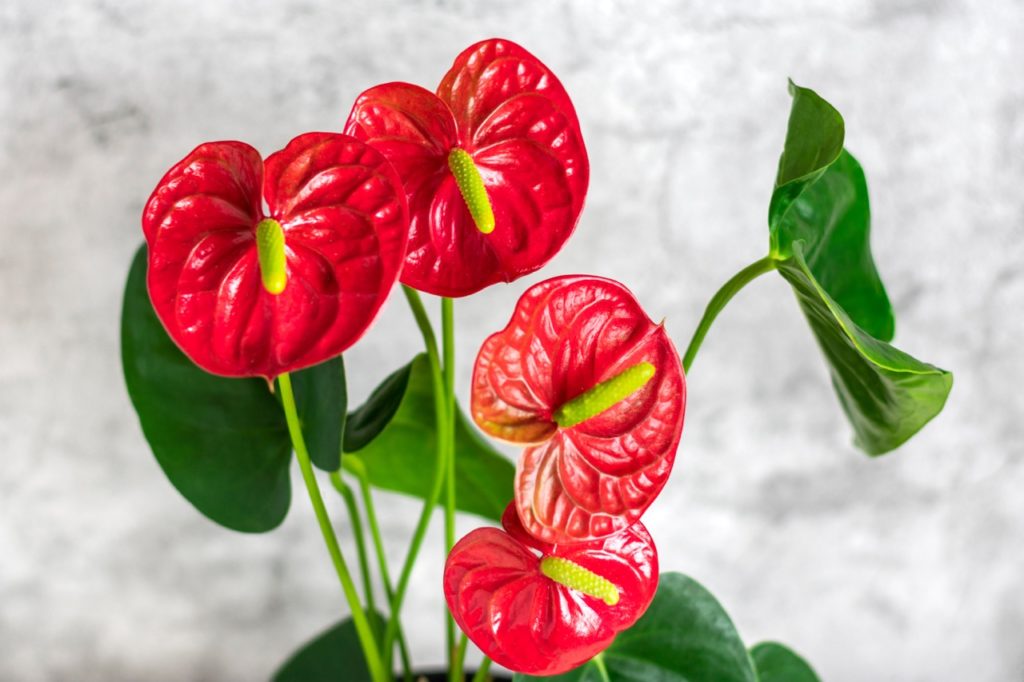
These plants are prized for their colourful spathes.
Often mistaken for flowers, these are actually colourful leaves, and the small flowers of this plant cluster on the spadix which sticks up from the middle of each spathe.
The spathes and the flowering spadix are often red and yellow, though they can come in various colours.
Anthurium Plant Care
Anthuriums are tropical plants which do require some care, but if you provide the right conditions, and take into account the needs of this plant, it should not be too challenging to grow it as a houseplant in your home.
Light
Anthuriums will not typically be able to cope with outdoor conditions in the UK and are best grown in a light, bright room inside your home.
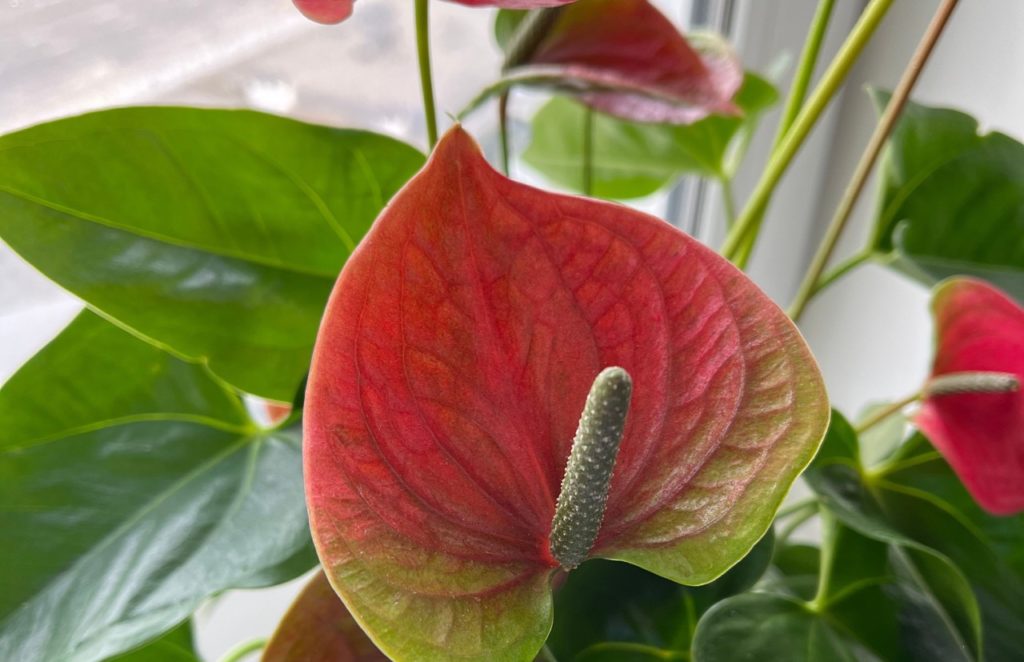
However, keep them out of direct sunlight during the summer months before moving them closer to a window or into as bright a position as possible in winter.
Soil & Feeding
Plant Anthuriums into a peat-free, loam-based potting mix.
The plants should be positioned with their crowns just above the surface of the medium and should be covered with moss or a moisture-retentive organic mulch to prevent the upper roots from drying out.
Feed monthly in spring and summer with a high-potassium organic liquid plant feed.
Temperature & Humidity
Anthuriums should be kept at temperatures between around 21-25°C at all times, and never below 16°C.
Avoid placing them where the temperatures will fluctuate too wildly, such as in drafts or too close to a stove or radiator.
Remember, these are rainforest plants and need high humidity.

Placing them in a bright bathroom or kitchen can be ideal, as Master Horticulturist Colin Skelly shares:
“Bathrooms can be ideal for houseplants that derive from rainforest environments.
“The higher relative humidity and frosted glass often make a close match to the high humidity and diffused light under the rainforest canopy.”
In a drier and less humid environment, you should mist regularly to keep up the humidity, but avoid misting the flowers.
Grouping houseplants together can also help in creating a more humid environment.
Wipe the leaves off with a damp cloth from time to time, to keep them shiny and free from dust and debris.
Watering
Over the spring and summer months, Anthuriums should be watered when the top few centimetres of the medium feel dry.
Always allow excess water to drain away afterwards and make sure waterlogging does not occur.
Common Problems
The most common issues with Anthuriums relate to growing conditions or incorrect care.
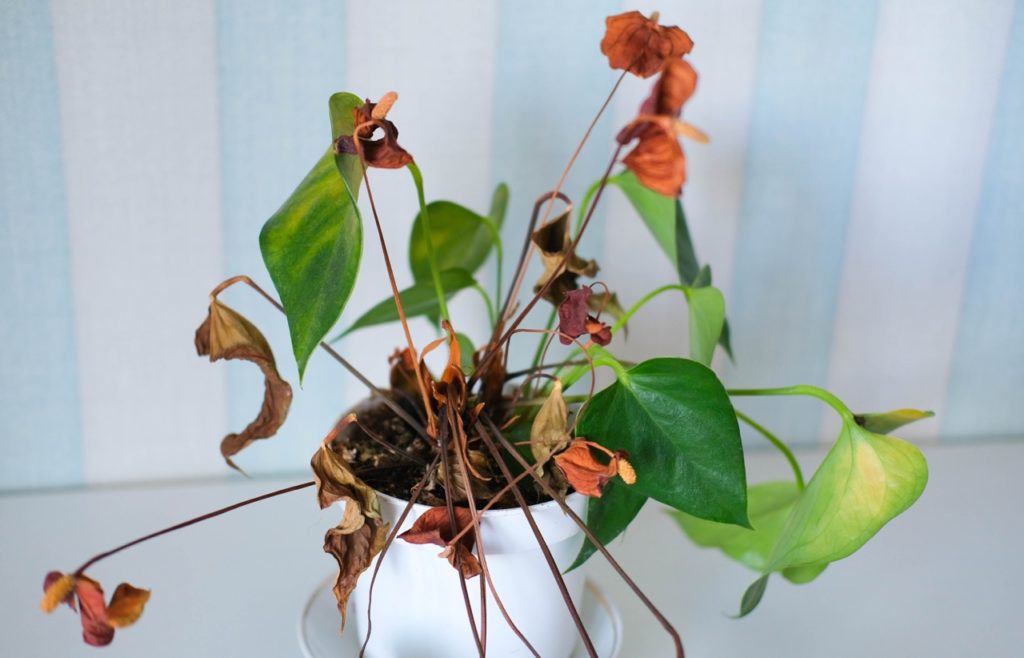
Other than environmental or care issues, these houseplants can be troubled by common houseplant pests, such as mealybugs, spider mites and scale insects.
Pruning
These plants do not usually require pruning, though you can trim off any damaged leaves as required.
Overwintering
Of course, Anthuriums will need to be kept in a heated room inside your home over the winter months.

Pay particular attention to humidity as the air can dry out more when heating systems are on.
Reduce but maintain watering over the winter months when the medium is dry.
Repotting & Transplanting
Anthuriums should usually be repotted every 3 years or so.
Look out for roots emerging from the base of the pot, or for the formation of aerial roots, as these are signs that repotting is required.
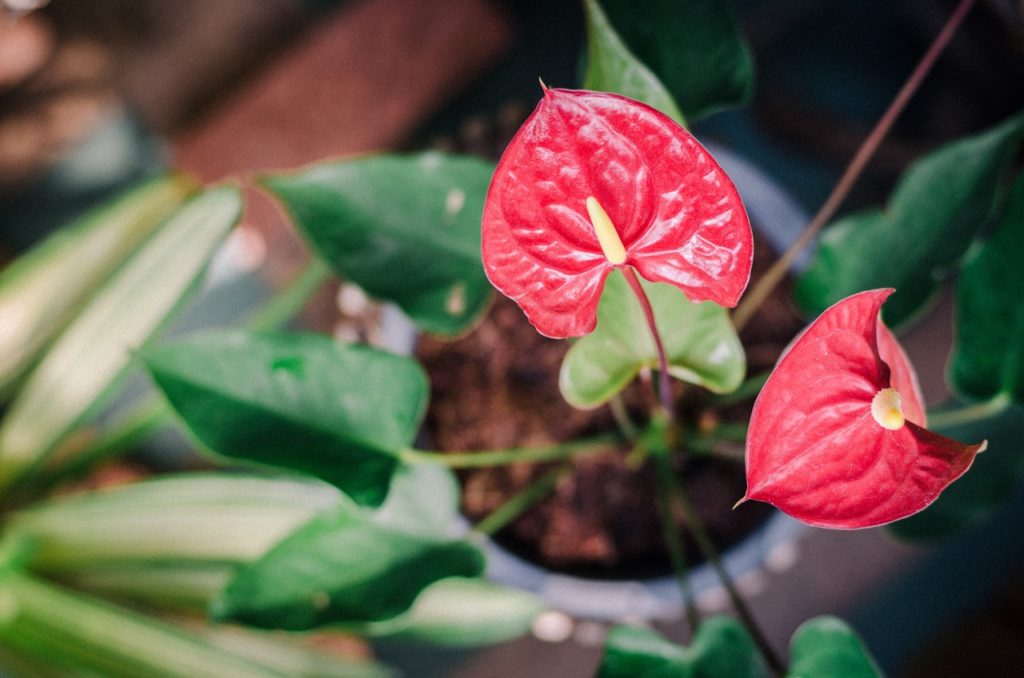
The best time for this job is in the spring.
Just choose a slightly larger pot and fill it will a suitable growing medium as described above.
Propagation
Anthuriums can be propagated by the division of mature plants.
This is often a job that is undertaken at the same time as repotting.
Simply gently pull the plant apart and repot each of the sections into their own separate containers.
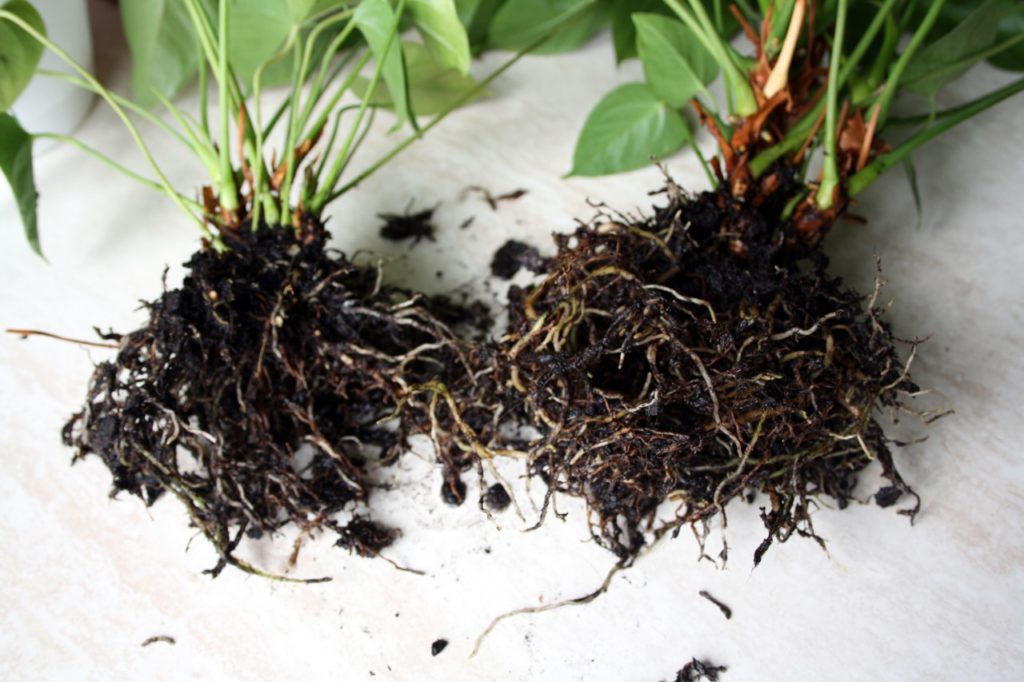
You can also take either stem or aerial root cuttings and place these in small pots of compost to root.
Dipping the ends of hormone rooting powder can increase the proportion of cuttings that root successfully, though is not always strictly essential.
Common Varieties
As well as the species type, there are many named cultivars of Anthurium andraeanum to consider, including:
A. andraeanum ‘Pink Champion’

A. andraeanum ‘Million Flowers’
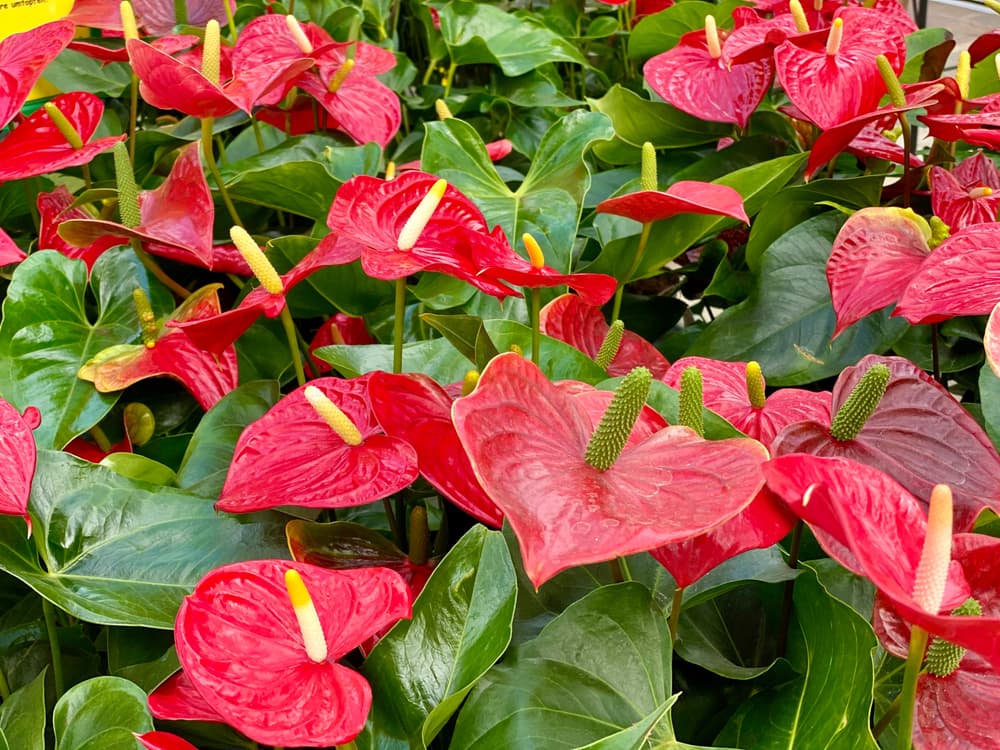
A. andraeanum ‘Black Love’
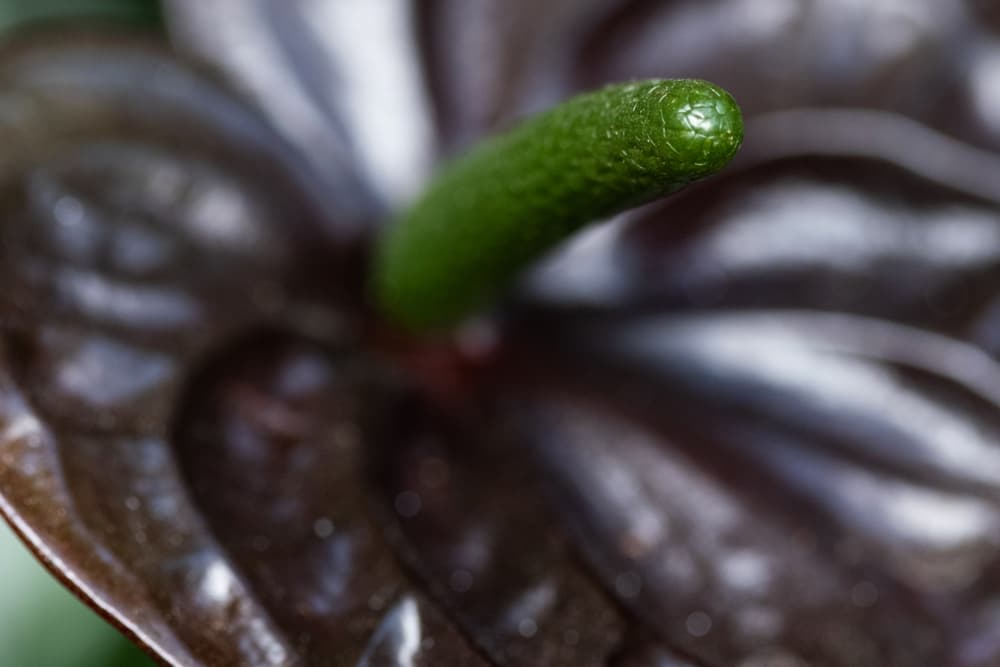
A. andraeanum ‘Red Champion’
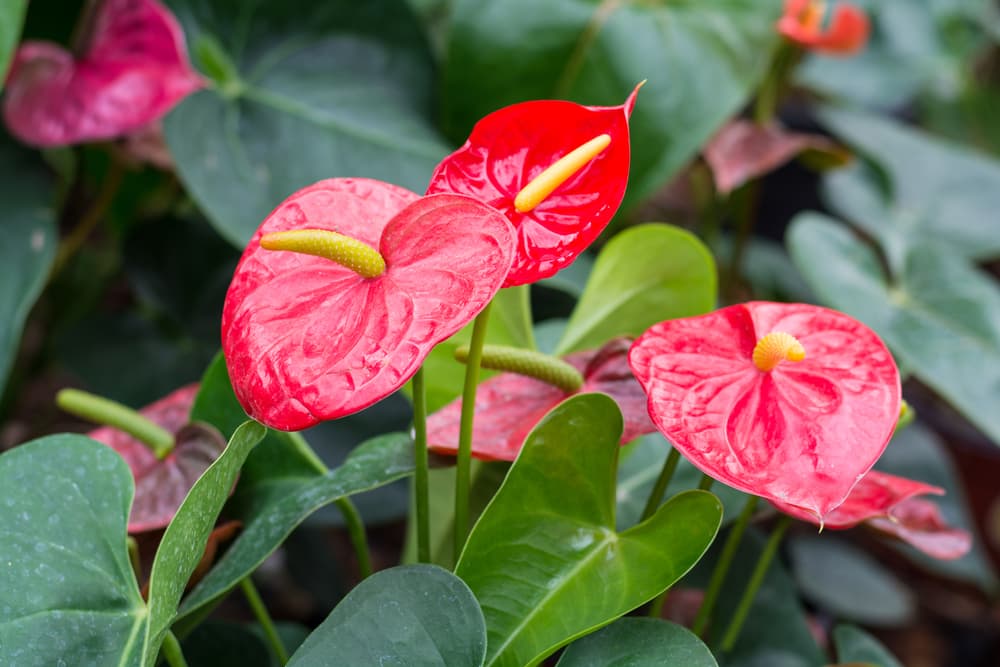
A. andraeanum ‘White Champion’
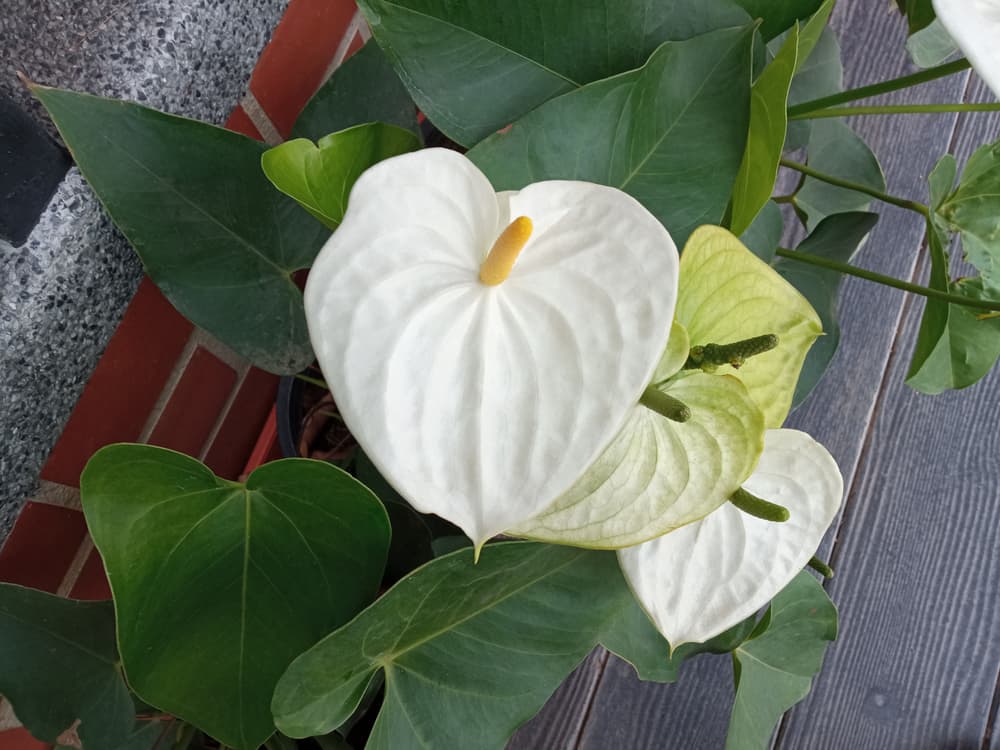
Cut Flower Care Tips
If you wish, you can take Anthurium flowers from your plant and display them as cut flowers elsewhere in your home.
Simply place the cut flowering stems into a vase or other suitable receptacle filled with water.
A cut flower feed will not hurt but is not essential.

Place them ideally in a bright space with indirect light and somewhere where temperatures don’t fluctuate too much.
After a week, refresh the water and cut 1cm off the stems.
With this step, the flowers should last for 2-3 weeks in their vase or container.
References
- 1Anthuriums. (n.d.). iNaturalist. Retrieved March 9, 2023, from https://www.inaturalist.org/taxa/49181-Anthurium
- 2Anthurium andraeanum. (n.d.). Kew Royal Botanic Garden. Retrieved March 9, 2023, from https://powo.science.kew.org/taxon/urn:lsid:ipni.org:names:84549-1
